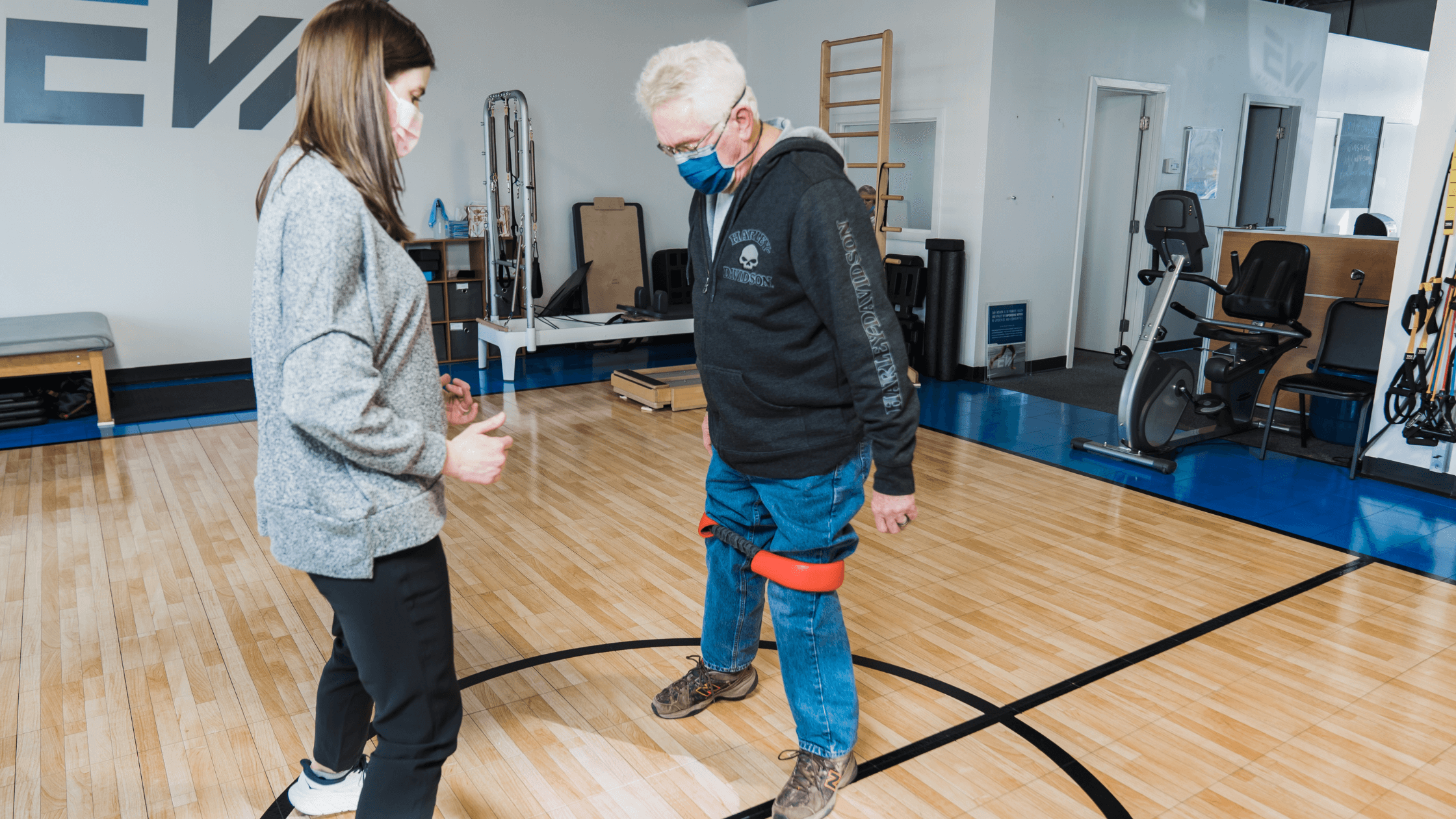Licensed Physical Therapist PT, DPT // EW Motion Therapy Tuscaloosa
When you or a loved one is diagnosed with Parkinson’s, it is easy to feel nervous for the future. You probably have many questions to ask your doctor, and you may even wonder how you will be able to continue the activities you love. While your movement may become progressively limited over time, there are still things that you or your loved one can do to help slow the progression and keep you moving.
It is essential to understand some common symptoms associated with Parkinson’s that affect movement. We see many Parkinson’s patients at EW Motion Therapy who have a variety of symptoms. After listening to their stories, our skilled therapists can help develop a treatment plan specifically for you or your loved ones. We understand if you decide to seek treatment elsewhere, but we would like to provide more information on how the diagnosis can affect movement capabilities.
This article discusses the common movement symptoms associated with Parkinson’s disease, the effects of these symptoms on daily functional movement, and provides advice for caregivers. This information will be helpful for you to move forward, knowing what you or your loved one should do to improve your quality of life overall.
What are the primary movement symptoms?
The medical community recognizes four primary (or cardinal) symptoms of Parkinson’s disease that affect movement. Not every Parkinson’s patient has all four of these symptoms, but a Parkinson’s diagnosis is usually based on the presence of one or more of them. Let’s discuss each one and how they may impact you moving about your day.
Tremors
When most people think of Parkinson’s disease, they probably see a person having tremors. Tremors are a prevalent symptom of the disease, and they mainly affect fine motor skills, such as brushing teeth, buttoning a shirt, typing, or writing. These essential but straightforward daily tasks can become complicated with tremors, so be sure to mention these tasks to your therapist so they can walk you through exercises that may help.
Bradykinesia
Bradykinesia is a term for slower movement patterns. Many Parkinson’s patients walk slower, and it takes their bodies longer to accomplish basic movements, like stepping and lifting arms. Bradykinesia can affect gait, which is how someone walks, and other gross motor skills like swinging their arms when they walk.
Rigidity
Another hallmark trait of Parkinson’s patients is rigidity throughout their body, especially their torso. Rigidity is the stiffness of muscles and joints, which can affect multiple regions, including the torso, upper/lower limbs, and neck. This can make it challenging to get up from chairs, get out of bed, or get into a car. These actions require bending and rotating, which is made more complicated by their rigidity.
Postural instability
Many Parkinson’s patients assume hunched positions, bent over at the hips and knees. These positions are caused by flexion contractures in the thoracic spine and hips. This is very common but can be dangerous if not watched over. Because of the forward-bent stance, it is difficult for them to look up and straight ahead as they walk, so many need assistive devices like canes or walkers to move around to reduce their fall risk.
What are some other symptoms?
Along with the four cardinal Parkinson’s symptoms affecting movement, patients can adopt other behaviors. Festination, or shuffling feet, is prevalent, which can lead to issues with gait. They can also lose control of their swallowing reflex, which can create problems with eating and drinking. Some Parkinson’s patients can also freeze in doorways, causing falls/balance issues or frustration. Others suffer from dystonia, or muscle cramping, which may be a side effect of medication. Issues caused by medication must be treated by the patient’s managing physician. There are many aspects of therapy that exist to help patients function better in their daily lives.
What can caregivers do?
Now you know more about how Parkinson’s disease can affect daily functional movement. From the moment of diagnosis, it is crucial to stay positive and help your loved one feel understood. Fighting Parkinson’s is just as much a mental battle as a physical one, with apathy and depression being common symptoms. But, if you intervene early and find ways to incorporate even simple movements into your loved one's routine, research has shown that these can help reduce the spiraling effect of the disease. Physical therapy can be a great solution to address movement symptoms associated with Parkinson's, and every patient is different. When you find a therapist who can understand and work with the condition, you have an ally who can support you and your loved one throughout your whole journey.
We teach our Parkinson’s patients at EW Motion Therapy easy exercises at home to continue moving and feeling better as they go about their day. We are proud to be the official physical therapy partner of the Parkinson's Association of Alabama, and multiple clinics of ours have thriving Balance class communities and many Parkinson's patients. If you are interested in our neurological therapies for treating Parkinson’s disease, fill out the Request an Appointment form on our website, and someone from our staff will contact you within 48 hours with your next steps.




